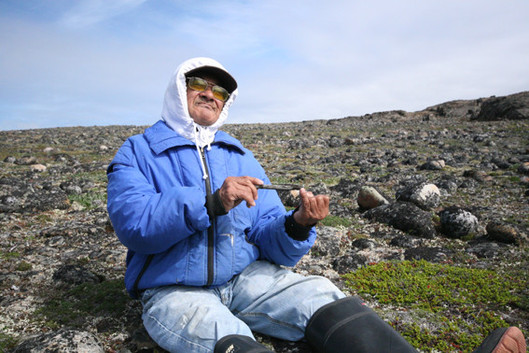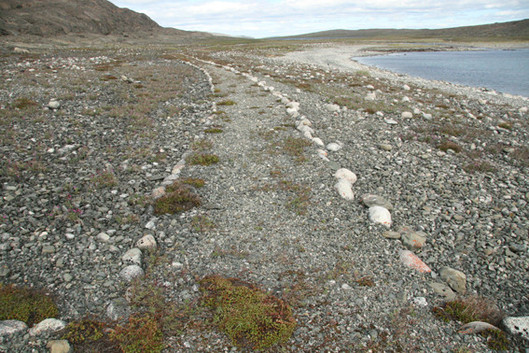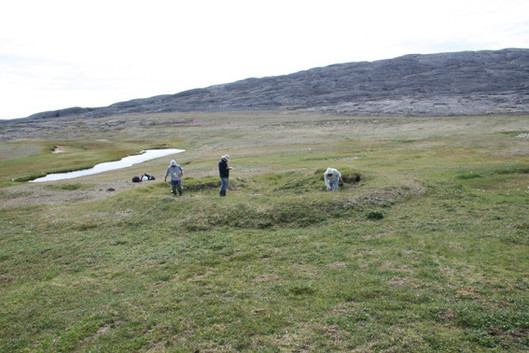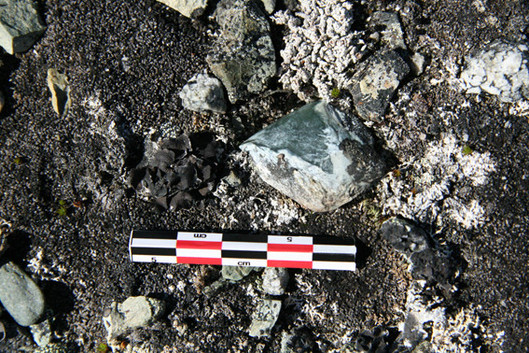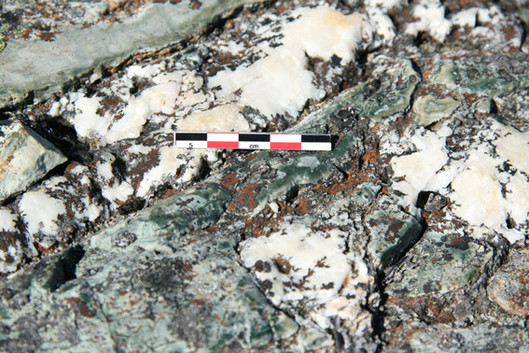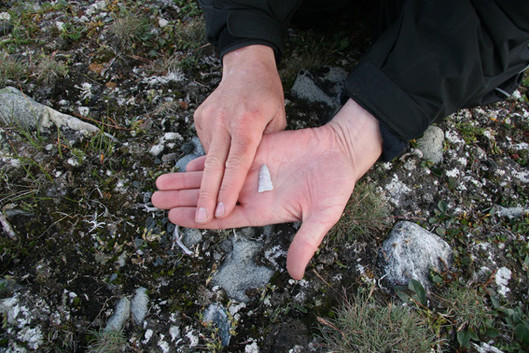Archaeological Research at Cape Smith Island and in the Akulivik Area, Summer 2010
By Pierre M. Desrosiers
Cape Smith Island was identified early on in the sequence of Arctic archaeological research due to the work of Manning in 1949. Since that period, little research has been conducted in the area. A team composed of Simon Makimak (hunter-guide), Davidee Makimak (assistant), and Andrew Papigatuk (assistant archaeologist), under the supervision of Pierre M. Desrosiers (archaeologist, Avataq), recently conducted an archaeological inventory in the area. They revisited known archaeological sites and recorded previously undocumented sites in the Cape Smith Island and Akulivik region.
One of the central goals of the survey was to find a suitable archaeological site at which to hold a field school in the summer of 2011. The project also included consultation with the local population and authorities in order to determine which areas and which sites would be of particular interest to the local people. The interviews revealed that Cape Smith Island itself is of special interest, specifically because the local elders had numerous stories to tell about their experiences on the island. In particular, Simon Makimak provided us with valuable information about his place of birth and about the Hudson Bay trading post located on the south coast of the island. We were then able to make a complete map of the trading post, which dates to the 1950’s, and record other sites known to the local population.
Among the sites revisited, the JeGn-2 site (excavated by Manning on the northeastern part of Cape Smith Island) appeared to be in good condition and would be a suitable location for a field school for Inuit students. The site includes a large number of semi-subterranean structures and archaeological features dating from both the Thule/Inuit and Palaeoeskimo periods. The undertaking of a field school project at the site would not only allow for a detailed study of the structures present but would also facilitate a necessary review of Manning’s interpretations of the site.
In addition to the known sites, many new sites were recorded and mapped during our visit, including sites from the Palaeoeskimo period. With the help of Simon Qinuajuak, attempts were also made to relocate a site on the north coast of the Island, but the search was ultimately unsuccessful.
On both Cape Smith Island and the neighbouring group of smaller islands, we recorded sources of chert and nephrite. This is the first time sources of nephrite have been recorded in Nunavik and this discovery gives us new insight into the raw material procurement strategies of the people inhabiting the region in the period before the arrival of Europeans.
On the mainland, we recorded a number of new sites including a Palaeoeskimo site and a dog burial.
Following the fieldwork season, Simon Makimak visited us for a few days in Montreal to provide more details pertaining to his traditional knowledge of the Cape Smith Island region.

